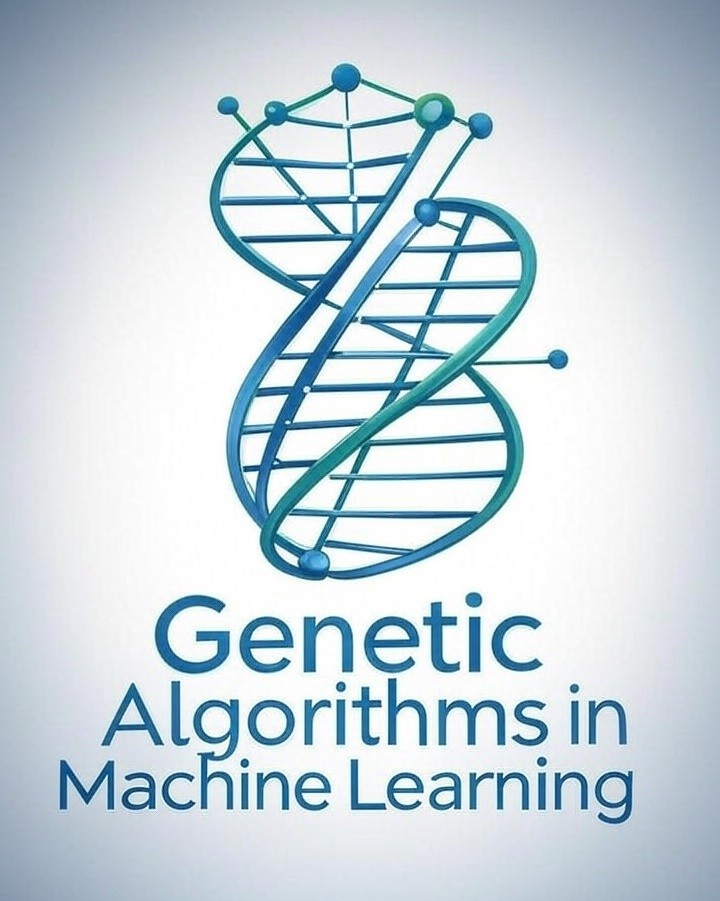
Genetic Algorithms in Machine Learning: Enhancing Search and Optimization
Introduction
Genetic algorithms (GAs) are a class of evolutionary algorithms that mimic natural selection to solve complex optimization and search problems. Originating from John Holland’s work in the 1970s, GAs evolve a population of candidate solutions over successive generations, using selection, crossover, and mutation operators to discover high-quality solutions. In machine learning, GAs excel at hyperparameter tuning, feature selection, neural network architecture optimization, and more.
Core Components of Genetic Algorithms
1. Population and Chromosomes
A GA begins with a population of randomly generated candidate solutions (chromosomes), each encoding parameters or decision variables.
2. Fitness Function
Each chromosome is evaluated using a fitness function that quantifies how well it solves the problem at hand.
3. Selection
Fitter individuals are probabilistically chosen to propagate their genes to the next generation, emulating “survival of the fittest.”
4. Crossover (Recombination)
Pairs of selected chromosomes exchange genetic material to create offspring that inherit features from both parents.
5. Mutation
Random alterations introduce diversity, preventing premature convergence by exploring new regions of the solution space.
Applications in Machine Learning
· Hyperparameter Optimization: GAs efficiently tune parameters such as learning rates, regularization terms, and network topologies, often outperforming grid or random search.
· Feature Selection: By evolving subsets of features, GAs identify the most informative inputs for classification and regression tasks, reducing dimensionality and improving model performance.
· Neural Architecture Search (NAS): GAs design neural network structures—number of layers, activation functions, connectivity—automating architecture discovery for deep learning models.
· Loss Function Design: Custom loss functions can be evolved to optimize specific performance metrics or balance trade-offs in multi-objective ML problems.
Advantages
Genetic algorithms offer distinct benefits that make them well-suited for ML optimization:
· Global Search Capability: Unlike gradient-based methods, GAs explore the entire search space and avoid local minima.
· Derivative-Free Optimization: GAs require only the fitness evaluation, making them ideal for non-differentiable or black-box problems.
· Parallelism: Populations can be evaluated concurrently, leveraging modern multi-core and distributed computing environments.
· Robustness to Noise: GAs handle noisy or stochastic objective functions without requiring smoothing or regularization.
Limitations and Challenges
Despite their strengths, GAs have practical constraints:
· Computational Expense: Large populations and many generations incur high compute costs, especially for expensive fitness evaluations.
· Premature Convergence: Without adequate diversity, populations may converge to suboptimal solutions too quickly.
· Parameter Sensitivity: Performance hinges on tuning GA hyperparameters (population size, mutation rate, crossover rate), which itself can be time-consuming.
· Implementation Complexity: Encoding complex problem domains and designing effective genetic operators requires domain expertise and experimentation.
Best Practices
To harness genetic algorithms effectively in ML:
· Use hybrid approaches, combining GAs with local search (e.g., hill climbing) to refine solutions and accelerate convergence.
· Implement adaptive operators that adjust mutation and crossover rates based on population diversity or fitness trends.
· Leverage elite preservation, carrying the best individuals unchanged to the next generation to maintain solution quality.
· Parallelize fitness evaluations on GPUs or clusters to mitigate computational overhead.
Conclusion
Genetic algorithms remain a versatile and powerful tool for search and optimization in machine learning. By emulating evolutionary principles—selection, crossover, mutation—they discover innovative solutions to hyperparameter tuning, feature selection, and neural architecture design. Although computationally intensive, best practices such as hybridization, adaptive operators, and parallelism can unlock their full potential, enabling robust, global optimization across diverse ML applications.






